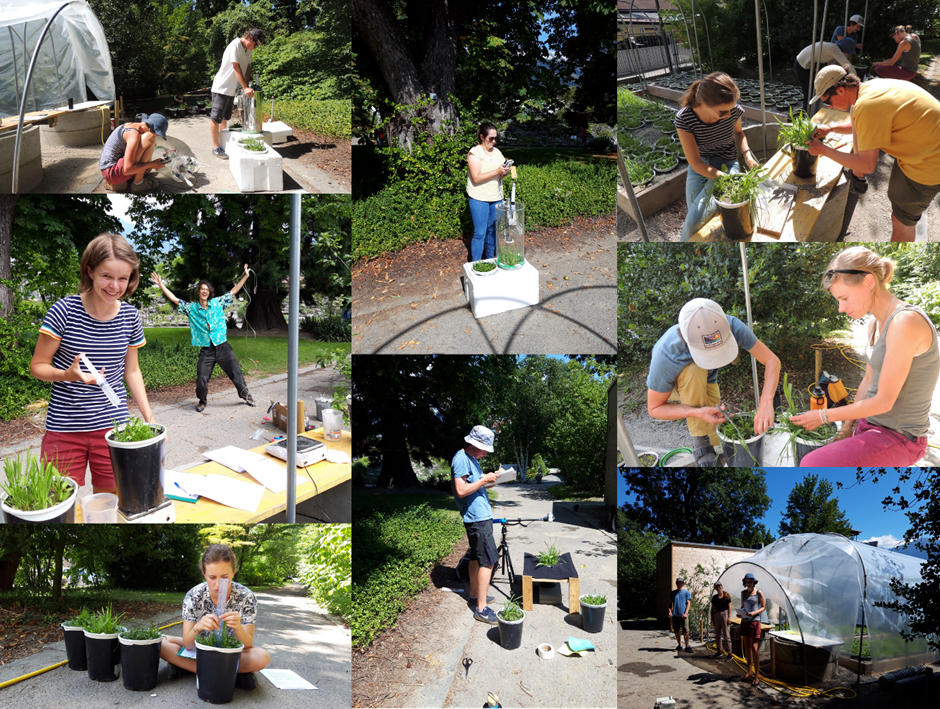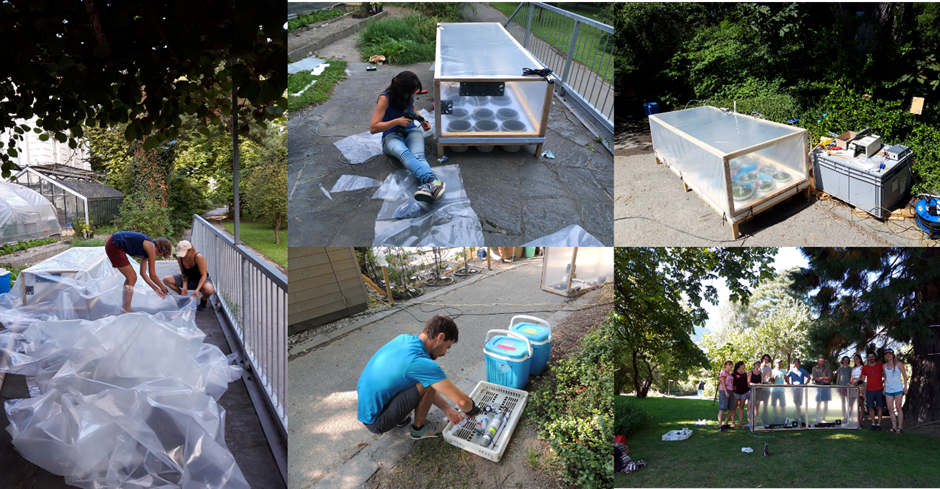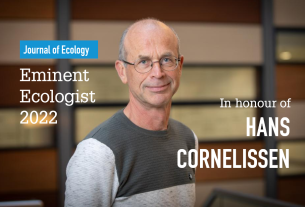|
Getting your Trinity Audio player ready...
|
Natalie Oram and Johannes Ingrisch discuss their recent article: Drought intensity alters productivity, carbon allocation and plant nitrogen uptake in fast versus slow grassland communities. Find out more about how drought intensity affects plant productivity, and plant–soil carbon and nitrogen cycling.
We have become so accustomed to hearing the sentence ‘drought events are becoming more frequent and severe’ it begins to resemble a verse, frequently recited by the ecology collective. However, the almost cliché nature of this line should not lessen its impact. Droughts pose one of the greatest threats to humanity due to their impact on ecosystem functioning, food production, and direct effects on human health from associated heat waves. The situation is becoming dire in our changing climate. The last decades have produced a wealth of research on the ecological impacts of drought. What is not yet well known is the degree to which this impact depends on drought intensity. The shape of the relationship between an ecosystem function and drought intensity is key to understanding how ecosystems will cope with a drier future. To borrow a line from Thom Kuyper, ‘nothing is linear in ecology, unless you have two points.’ The underlying assumption of replicated experimental designs is that the difference between treatments (for example, drought versus a control) is linear. Gradient designs, where the experimental treatment is continuous, allow for detection of non-linear responses (Kreyling et al., 2018). These non-linear responses can take the form of thresholds – abrupt shifts in a response that can drastically alter grassland functioning both during and after the drought event (Ingrisch et al., 2023).
The experiment
This is the point where the Grassland Responses to Drought Intensity (GReDI) project begins. We decided to join forces to investigate how increasing drought intensity affects grassland plant and microbial responses to drought. Together with Michael Bahn (University of Innsbruck), Richard Bardgett (The University of Manchester), Fiona Brennan (Teagasc), and Gerd Gleixner (MPI Biogeochemistry) we designed a drought experiment where we exposed two plant communities with contrasting resource acquisition strategies to a gradient of drought intensity (increasing soil water deficit). Check out the 3-minute summary below:
We determined plant community productivity (aboveground biomass) at peak drought and two months after re-wetting, and found that there were threshold responses at both time-points. Interestingly, there was co-ordination between the resistance and recovery thresholds, signalling that the level of drought intensity where productivity collapses during drought is related to the abrupt increase in productivity overcompensation after drought. Johannes had recently found a similar response in a different study (Ingrisch et al., 2023), and GReDI gave us the chance to investigate this further by exploring potential mechanisms that underpin the observed responses in productivity. We wondered what enabled these over-compensatory responses: how did plants that had experienced a massive stress bounce back so quickly, producing significantly more above-ground biomass than those not affected by the drought? Could the answer lie in drought intensity effects on carbon (C) and/or nitrogen (N) cycling? In interactions with the soil microbial community?

We quantified plant-soil C and N dynamics after 21 days of drought and 7-days after re-wetting. We tracked recently plant-assimilated C by pulse-labelling the plant communities with 13CO2 and then tracing 13C into leaves, roots, soil (extractable organic 13C), and the microbial community (microbial biomass 13C and 13C in phospholipid and neutral lipid fatty acids), and finally, back into the atmosphere (respired 13C). We determined nitrogen in the soil and plants to understand how drought intensity affects N availability, and plant’s capacity to take up N during and after drought.

Major findings
As we had hoped, our gradient design allowed us to discover non-linear relationships between drought intensity and plant community productivity, C allocation, and N dynamics both during and after the drought event. We identified thresholds in plant community productivity at peak drought: plant communities were able to cope with water stress up until a point where their productivity abruptly declined. Pinpointing thresholds in C allocation and N dynamics, as we did with plant productivity, requires a bit more data than we were able to gather (without passing a threshold and collapsing ourselves) to be able to do with statistical confidence. With our more labour-intensive data (pulse-labelling is a lot of work) we are the first to show non-linear relationships of C partitioning with drought intensity. A next important step would be to investigate a finer-scaled drought intensity gradient to characterise thresholds in C allocation and N dynamics. Identifying this liminal space where the threshold occurs is key to understanding the implications of drought on ecosystems – when can an ecosystem recover, and at what point does the system collapse.
In conclusion
In our study, we identified thresholds during drought, that set the system recovery on a whole new trajectory within the time frame of our study. And while we were not (statistically) able to pinpoint thresholds in all studies parameters, we did find non-linear responses in plant-soil C allocation and N uptake to increasing drought intensity. These are dynamics are often overlooked when using designs with 2 (or few) drought stress levels. Thus, studying drought intensity, with gradient experimental designs, is important to understand grassland drought responses and post-drought recovery. Identifying thresholds is key to helping predict how ecosystems will respond to extreme weather.
The consequences of crossing thresholds in grassland ecosystem functioning could be catastrophic, given our reliance on the ecosystem services that grasslands provide. Drastic reductions in greenhouse gasses critical to curbing global warming (and associated extreme weather), as are management practices that can mitigate the effects of extreme drought on grassland ecosystems.
‘Droughts are becoming more frequent and severe’. Collectively, the ecological community is writing the next line in this verse. Let’s hope it is one that encompasses a deeper understanding of drought intensity and offers mitigation strategies that preserve grassland functioning.
Natalie Oram and Johannes Ingrisch, University of Innsbruck, Austria
Read the full article online: Drought intensity alters productivity, carbon allocation and plant nitrogen uptake in fast versus slow grassland communities
Thanks
Thanks to our co-authors: Richard Bardgett, Fiona Brennan, Georg Dittmann, Gerd Gleixner, Nadine Praeg, Paul Illmer, and especially Michael Bahn for their discussion, ideas, problem-solving, and encouragement.
The GReDI project was a monster experimentally that was only possible with a small army of interns, students, and basically anyone that was willing to turn up at the experiment. Two special mentions: to our high-school intern Laura Dobrowz, perhaps the most enthusiastic (future) ecologist out there and an absolute joy to work with. Not many can have such enthusiasm for measuring GPP in +30℃ heat, nor ever seem to get bored with the menial (but necessary) tasks that are par for the course in experiments. Thanks to our BSc. thesis student Thea Schwingshackl who spent the autumn weighing every plant biomass sample into tiny tin cups on a micro-balance with impressive persistence. In total, she ground, pooled/weighed >1300 samples (and could still smile at the end of it) which will seriously impress any micro-balance users out there. Thanks to the entire team for their hard work which made this all possible: Moritz Mairl, Greta Ploner, Dina in ‘t Zandt, Lena Müller, Akira Yoshikawa, Fabrizzio Protti, Deniz Scheerer, Suzanne Guyard, Andrew Giunta, Anna Reichstein, Heike Geilmann, Kathiravan Mohamed Meeran and Beverley Anderson.
Thanks to Markus and the Botanical Garden crew for their support, Herbert and Mario for their technical expertise, the MPI Biogeochemistry in Jena for hosting Natalie to do the PLFA/NLFA analysis, and the Microbiology Department, University of Innsbruck for supporting the soil C and N analysis. A huge thanks to our groups – the Functional Ecology Group, University of Innsbruck and the Soil Environmental Microbiology Group, Teagasc for their input and support.
We appreciate funding from the Research Leaders 2025 programme co-funded by Teagasc and the European Union’s Horizon 2020 research and innovation programme under the Marie Sklowdowska-Curie grant agreement number 754380 (to Natalie). Support from a European Research Council (ERC) Advanced Grant (883621, SoilResist to Richard), and a Tiroler Wissenschaftsfonds grant (grant ID F.16568/5-2019, to Johannas).
Ingrisch, J., Umlauf, N., & Bahn, M. (2023). Functional thresholds alter the relationship of plant resistance and recovery to drought. Ecology, 104(2), 1–15. https://doi.org/10.1002/ecy.3907
Kreyling, J., Schweiger, A. H., Bahn, M., Ineson, P., Migliavacca, M., Morel-Journel, T., Christiansen, J. R., Schtickzelle, N., & Larsen, K. S. (2018). To replicate, or not to replicate – that is the question: how to tackle nonlinear responses in ecological experiments. Ecology Letters. https://doi.org/10.1111/ele.13134
